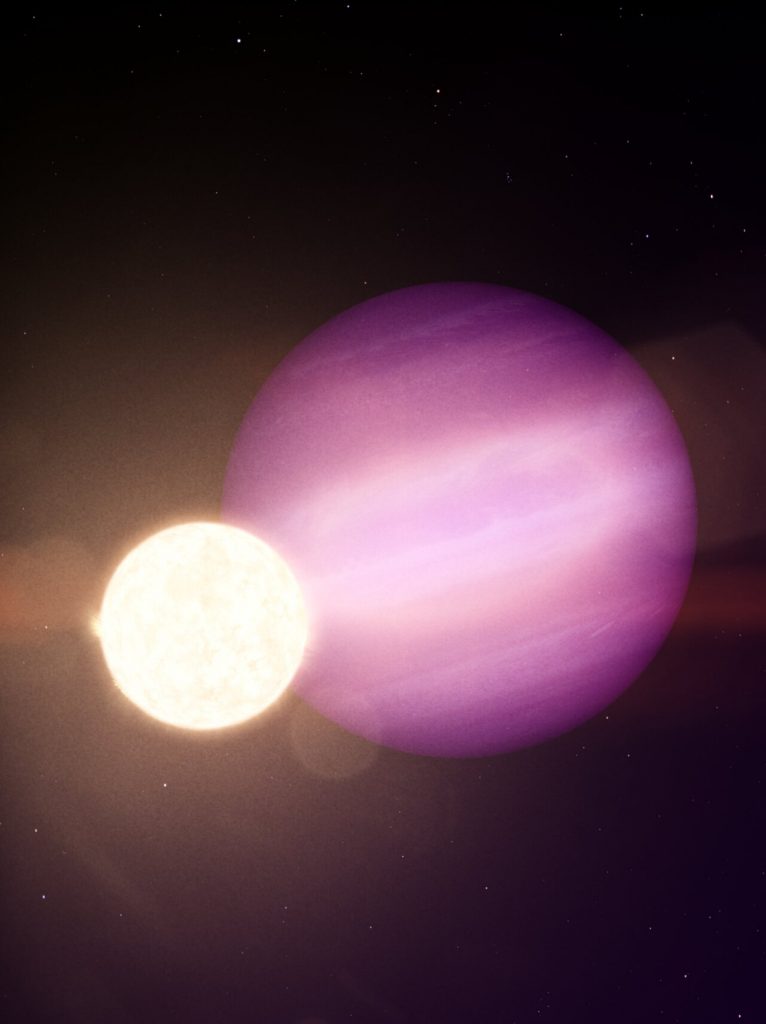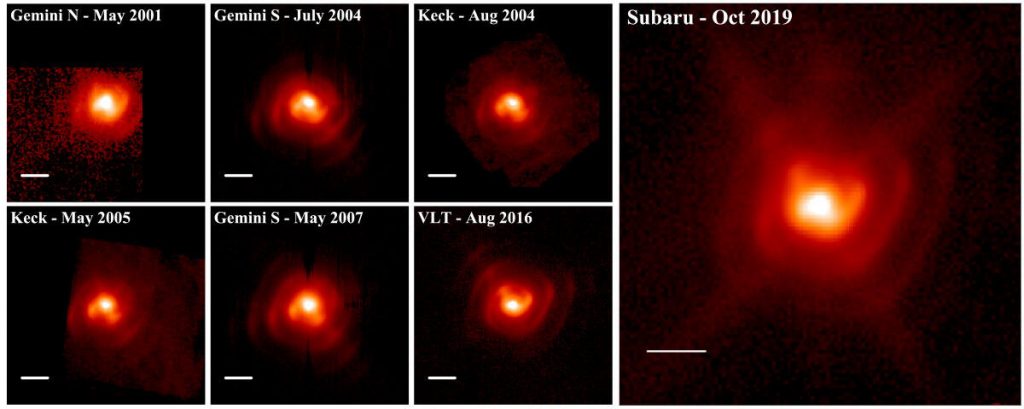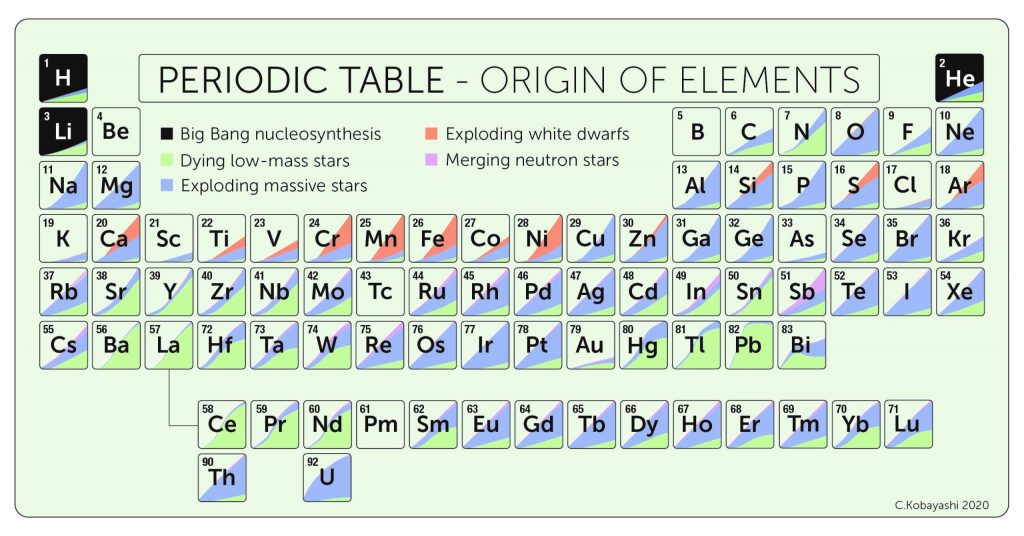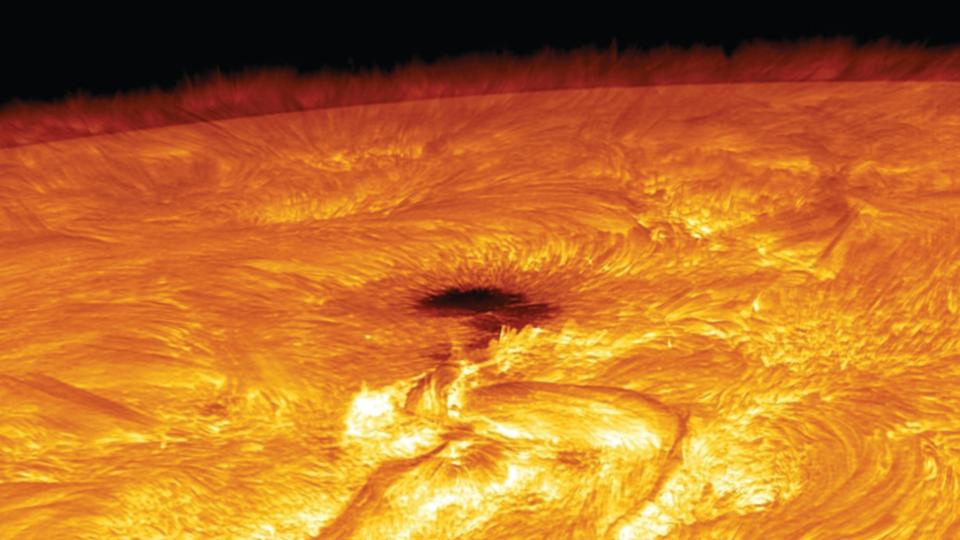Media
Transcript

Stay tuned after the Daily Space for a live interview with Prof. Sara Seager of MIT regarding this week’s news about phosphine in the atmosphere of Venus.
With today’s news, I feel like the cycle of planetary discoveries has finally come full circle.
Back in 1992, Aleksander Wolszczan and Dale Frail announced the discovery of a multi-planetary system around pulsar PSR 1257+12. In this case, by “planet” they meant lumps of rock roughly four earth masses in size orbiting at distances slightly larger than Mercury’s orbit around our Sun. At least we assumed they were lumps of rock since these objects would have had to survive a blast from the supernova explosion that formed the pulsar.
These were the first exoplanets discovered, and they’d be followed in short order by the discovery of hot Jupiters in 1995. While most of our attention on exoplanets has focused on planets around regular stars, astronomers have continued to find worlds around dead stars, including the 2000 discovery of a planet orbiting a neutron star/white dwarf binary, and many subsequent discoveries of rocky (assumed to be) wreckage around white dwarfs and heavier neutron stars.
During the roughly soon to be 30 years of exoplanet exploration, many have wondered if white dwarfs, which represent the future evolution of our Sun, are capable of having regular gas giants orbiting them. Fundamentally, we want to know, when our Sun dies, what worlds will have a chance of sticking around. We know the Sun will expand out into a red giant and eat a few worlds in the process; we know it will undergo significant mass loss, especially as it forms a planetary nebula and sheds its outer atmosphere, and that could alter planets in myriad ways. What exactly will happen to our solar system… we just don’t know.
Well, we now know, at least, that gas giants can be found around white dwarf stars.

In a new paper published in Nature, a team lead that includes Andrew Vanderburg as first author finds that a gas giant orbits a white dwarf. Using data from NASA’s Transiting Exoplanet Survey Satellite (TESS), Spitzer Space Telescope, Gemini North, and the Hobby-Eberly Telescope (HET), they found that the planet is no larger than 13.8 Jupiter masses, and it orbits every 34 hours. This is an odd-looking pair, with the star being about four times the radius of the Earth, and the planet being an order of ten Earth radii. What struck me about this discovery is the gas giant appears to have a temperature not too different from Earth’s temperature – about 17 C. This makes me imagine an Endor-like moon evolving in this new configuration.
And let me make it clear – this is a new configuration. The planet had to migrate to where it is today. It’s not entirely clear how planets like this migrate into a new and stable orbit, but we know they can. In all likelihood, this planet started farther out and somehow got knocked into an elliptical orbit through interactions with other planets, and tidal effects that included stretching this world out were able to circularize the orbit. However it happened, this means we get to imagine cool new futures for stellar remnants. Let the science fiction writing begin!
Looking at the other side of stellar evolution, in a new article in The Astrophysical Journal, Ryan Lau and company share new observations of a massive young star called a Wolf-Rayet star that is in orbit around another massive star. This system is acting like a super hot sprinkler where instead of water, it is jetting out spirals of dust.

Wolf-Rayet stars are known for having hot jets driven by magnetic fields. As the two stars in this system orbit roughly every twenty years, the source of the jets – that Wolf-Rayet star – moves like a spinning sprinkler head and changes the source of the dust. This is leading to an amazing spiral that we have an odd side view of. The random alignment of this system has the two stars orbiting almost perpendicular to the plane of the sky, so the spiral we see is like the spiral of water flying away from that imaginary sprinkler head I keep mentioning.
This system isn’t just a case of really cool geometry. It is also a case of weird physics leading to a hot system producing dust – something usually found in cooler situations. According to co-author Anthony Moffat, who uses somewhat strong language: When the two [stars’] winds collide, all Hell breaks loose, including the release of copious shocked-gas X-rays, but also the (at first blush surprising) creation of copious amounts of carbon-based aerosol dust particles in those binaries in which one of the stars has evolved to He-burning, which produces 40% C in their winds.
This system has it all – geometry, chemistry, and physics.
Those of you who have been enjoying the Daily Space for a while may have noticed that our ideas about where elements and molecules come from have been evolving in recent years. One of the biggest changes is the realization that neutron star collisions contribute gold, but new work appearing in The Astrophysical Journal with lead author Andrew Masterson shows that merging neutron stars on their own are not enough to get the job done.

To be fair, every element can be produced in more than one way by nature. In their paper, they try and lay out all the ways the elements from carbon to uranium come to be through new models, and in the process, they point out that with gold, we still have some work to do. According to co-author Kobayashi: For example, we built this new model to explain all elements at once, and found enough silver but not enough gold. Silver is over-produced but gold is under-produced in the model compared with observations. This means that we might need to identify a new type of stellar explosion or nuclear reaction.
We’re getting there with understanding the origins of elements. We’re just not all the way there. Not yet.

As a final note, I’d like to share that a consortium of solar scientists has declared the next sunspot cycle should be similar to the one we just experienced – nothing too exciting and nothing too dangerous but with just enough awesome aurorae from flares and coronal mass ejections to keep the sky interesting. It’s expected that the next solar maximum should occur in 2025, so start planning your aurora watching trips today.
Learn More
A White Dwarf’s Surprise Planetary Companion
- University of Wisconsin-Madison press release
- NSF’s NOIRLab press release
- McDonald Observatory press release
- NASA press release
- “A Giant Planet Candidate Transiting a White Dwarf,” Andrew Vanderburg et al., 2020 Sep. 16, Nature
Unraveling a Spiral Stream of Dusty Embers from a Massive Binary Stellar Forge
- Subaru Telescope press release
- Keck Observatory press release
- “Resolving Decades of Periodic Spirals from the Wolf-Rayet Dust Factory WR 112,” Ryan M. Lau et al., 2020 September 15, The Astrophysical Journal (preprint on arxiv.org)
Neutron Stars Contribute Little, but Something’s Making Gold
- Science in Public press release
- “The Origin of Elements from Carbon to Uranium,” Chiaki Kobayashi [1], Amanda Karakas [2, 3] & Maria Lugaro [4, 5, 2], 2020 Sep. 15, Astrophysical Journal (preprint on arxiv.org)
Sunspot Cycle Is Stabilizing, According to Experts Worldwide
Credits
Written by Pamela Gay
Hosted by Pamela Gay
Audio and Video Editing by Ally Pelphrey
Content Editing by Beth Johnson
Intro and Outro music by Kevin MacLeod, https://incompetech.com/music/


 We record most shows live, on Twitch. Follow us today to get alerts when we go live.
We record most shows live, on Twitch. Follow us today to get alerts when we go live.